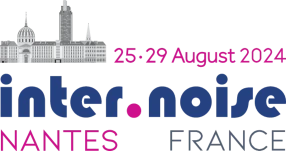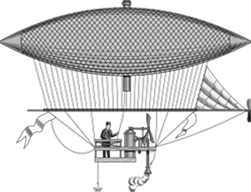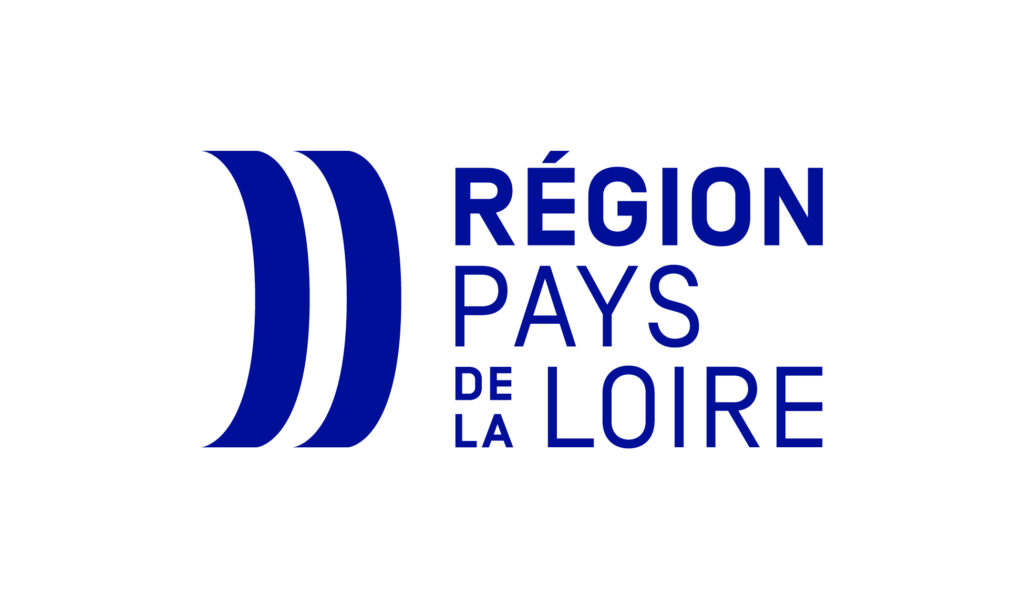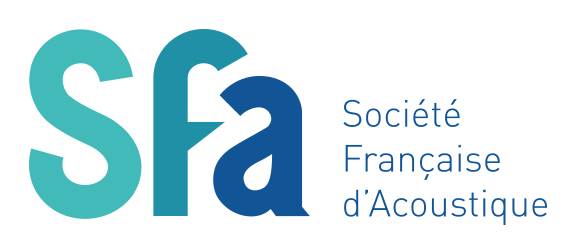Exhibitor Workshops
During the Industrial Sessions scheduled just after the lunch break on Monday 26/08 and Tuesday 27/08, exhibitors will offer 40-minute workshops within dedicated time slots outside the scientific sessions.
They are free to all congress delegates, and to One-Day Exhibition Visitors on their day of booking.
Registration of participants to the workshops will be available by logging in to their online account. Congress delegates will be informed when booking to workshops is open.
Exhibitor Workshop program
This program is not yet complete and will be extended with several exhibitor workshops.
Monday 26 August, 13.40-14.20
Abstract
The control of noise arising from construction activities effecting the surrounding community is not an issue isolated to a single country. The fundamental principals of construction noise remain the same the world over, however, the approach to monitoring, controlling and legislating this issue varies between countries and in some cases regional authorities.
In this workshop we have set out to review and summarise the different approaches taken to monitor and control construction noise in the UK, France, Monaco, Germany, Sweden, the USA and Canada. We have reviewed local legislation and limits, the parameters recorded and best practice with regards to monitoring, reporting and control.
In consultation with experts from each country we have identified the regional factors which have led to the different approaches along with advantages and limitations for each method.
Abstract
Let’s explore how the essence of innovation in acoustics lies in listening carefully and responding to real needs on the ground. By adopting an approach resolutely oriented towards action and practical application, we will demonstrate through case studies and feedback how the most avant-garde acoustic solutions are those designed in perfect harmony with the specific expectations and constraints of users.
This workshop will highlight recent success stories where acoustics has met a variety of challenges :
- Improving industrial maintenance by analysing sound to prevent breakdowns,
- Increasing public safety by accurately identifying critical sound sources such as gunshots,
- Managing a construction site using the “balance approach”.
By focusing on the innovation process, from the recognition of the need to the delivery of an effective and adapted solution, this workshop will illustrate that true innovation is measured not only by its capacity for technological breakthrough, but above all by its tangible and positive impact in the field.
Abstract
Since a few years now, sustainable buildings are in rising demands leading to increasing use of wood construction due to its sustainable character.
Following this trend, mass timber solutions, including cross-laminated timber (CLT), can be an excellent substitute to more traditional, stiffer and heavier building materials such as concrete and steel, when some of their inherent properties aren’t required.
However, while CLT has many advantages as a sustainable building material, it can also pose some rather unique challenges in terms of acoustics. Due to its orthotropic character and low mass density, the material is less effective acoustically, resulting in increased direct sound transmission and flanking transmission paths.
CDM Stravitec has developed and tested floating floor solutions to reduce direct sound transmission. To reduce flanking sound transmission elastic decoupling materials can be installed, and to maintain structural stability, complementary anchors with acoustic decoupling feature need to be installed. Acoustical and structural integrity tests on the developed flanking sound isolation solutions were performed.
CLT panels are also an ideal building material for 3D modular constructions, however, transferring vertical and horizontal forces between stacked modules can compromise acoustic requirements. CDM Stravitec has developed solutions using pre-compressed elastomer decoupling techniques to transfer forces without compromising sound insulation. Structural integrity tests on the couplers and in-situ measurements of airborne sound isolation have shown that good coupling design can achieve the correct load transfer and high sound insulation between the modular structures.
The results of the above-mentioned test campaigns and main findings will be presented and discussed during this workshop, as well as challenges of designing acoustical solutions for mass timber construction without compromising functional and structural integrity of the building.
Keywords: timber construction, cross-laminated timber, modular construction, acoustics, direct sound transmission, flanking transmission, structural integrity.
Abstract
An advanced 2D analysis is developed to accurately determine the Transmission Loss (TL) of axisymmetric dissipative mufflers. These mufflers may include a pod, one or several rings, and/or lining. The model takes into consideration the acoustic properties of perforated sheets and fiber.
To calculate the eigenvalues and eigenfunctions of sound propagation, the model utilizes complex function analysis, effectively identifying the zeros of the function. Employing the least attenuated mode technique, the model then derives the transmission loss.
To validate the model’s accuracy, the derived transmission loss is compared with the results obtained from a finite element software. The comparison reveals a remarkable agreement between the two sets of results, affirming the reliability and effectiveness of the developed analysis.
The proposed model can be easily customized to incorporate mean flow or integrated into a mode matching method 1 to 4 to simulate hybrid silencers with both reactive and dissipative components.
Abstract
User experience is frequently overlooked in product development and may result in an unsatisfactory experience. The use of metrics development in combination with psychoacoustic analysis provides a powerful tool for incorporating user experience into your everyday product development. In this workshop we will show you all the important steps of the metrics development process, from jury testing to the use of the latest psychoacoustic analysis, using a practical example.
Abstract
This workshop demonstrates the use of Manatee e-NVH CAE collaborative platform by NVH Engineers involved in the development of electric drive systems. In the example chosen to illustrate the workshop, an electric motor with Permanent Magnets is responsible for magnetic excitations of the electric vehicle powertrain, besides the mechanical excitations produced by the gear system. These electromagnetic forces produce dynamic vibrations of the e-powertrain housing and driveline at some specific harmonics, resulting in strong tonalities. This results in so-called electromagnetic Noise, Vibration and Harshness (e-NVH) which can be propagated as air-borne or structure-borne noise.
After troubleshooting the magnetic vibration problem (radial pulsating excitation at H48, exciting a structural mode of the structure), stiffening the housing leads to a significant noise reduction in high-speed range. Besides, eccentric rotor NVH simulations demonstrate that going from 10 to 20% static eccentricity only increases NVH levels of a few dB.
Title: AcouS STICS21® Software Suite for the prediction of partition acoustique performances and insulations between premises – Description and practical application on CLT wood construction
Abstract
After a short presentation of the AcouS STICS21® Software Suite composed of AcouS STIFF® dedicated to the prediction of sound transmission loss of partitions, AcouS STING® dedicated to the prediction of the impact noise level of floors and AcouS STICS21® for the calculation of airborne and structure-borne noise insulation levels (Dn,T & L’nT), all reunited in one tool, a practical application of CLT wood construction will be presented. The situation is the one of a CLT construction (facade and floor) with wall lining and floor covering. It will be seen how to simulate each construction element independently (R and Ln) and thereafter the assembling of theses in connected volumes for insulation predictions. Through this example, the calculation model integrated into AcouS STICS21®, issued from the ISO 12354 standard series, will be recalled and the philosophy of the use of different types of junctions (Kij) and other possible and necessary approximations at the time of calculation will be discussed. A variant of this example with a wooden frame facade will also be presented: how to model the facade alone and how it can be integrated into the insulation calculations.
Title: Advances in Noise Reduction: Exploring Sound Intensity, Source Localization and Ranking
Date/Time: Monday 26 August, 13.40 – 14.20
Room:
Abstract
This seminar will discuss the latest advancements in noise reduction, with a focus on sound intensity, source localization, and noise ranking methodologies. Participants will learn about innovative techniques and tools for accurately measuring and analyzing sound, which are crucial in solving acoustic problems across various industries. Through a combination of theoretical insights and practical use cases, this session demonstrates how to implement effective noise control strategies. It will cover the usage of particle velocity sensors, the combination of experimental data with numerical simulations, and other state-of-the-art technologies to ensure that acoustic targets are met in diverse environments.
Title: With the upcoming French railways vibrations regulations, short review of the French consultancy knowledge and research works about the prediction and mitigation of the vibrations propagation in the grounds and buildings
Date/Time: Monday 26 August, 13.40 – 14.20
Room:
Abstract
Short review of what we are able to do (modelings, measurements, …), what we are working on (2D/3D finite element calculations, indicators, target values, …), the obstacles that remain (poor input data, definition of the appropriate target values, …) with one or two examples on real cases. This would be an introduction to discussion and sharings with participants from other countries on their own practices and feedback. The opportunity to “share knowledges” on this complex topic.
Tuesday 27 August, 13.40-14.20
Abstract
In this workshop we will introduce you to our iNoise and NoiseAtWork software.
iNoise is an intuitive and quality-assured software for modelling environmental noise from industry, roads and railways according to the CNOSSOS-EU and ISO 9613 noise prediction methods. During the workshop we will demonstrate how easy it is to build, calculate and report environmental noise models with the cost-effective iNoise.
NoiseAtWork is a simple yet powerful tool for reporting any type of measurement as interpolated contours, thus adding value to your reports. During the workshop we will demonstrate how extremely easy it is to create and report interpolated contour maps for any measured indicator such as Noise in dB(A), Temperature in °C, Humidity in % and/or Gas concentration in ppm.
Abstract
Acoustic sandwich panels could be used in (industrial) noise control to reduce the reverberation in production halls and to protect the environment installations or traffic.
We will demonstrate our extensive test program with result up to a Rw of 70 dB. The effect of a cavity, absorption in the cavity, adding mass to a panel.
We will also demonstrate some projects where our solutions have been advised.
Abstract
To address the challenge of noise pollution associated with the rising frequency of open-air events in urban areas, proactive noise predictions are indispensable for averting noise-related issues. However, integrating coherent sound sources from diverse manufacturers into noise forecasts requires an open exchange format for sound system planning software and environmental noise software. The need to work with coherent sound sources in sound reinforcement systems lies in the precise modeling of the directivity, especially for low frequencies. Collaboratively, d&b audiotechnik, L-Acoustics and SoundPLAN are working on the SDE (Sound/System Design/Data Exchange/Export) format to facilitate an easy exchange of information between sound systems engineers and environmental acousticians.
The workshop will feature a live demonstration within SoundPLAN, showcasing the practical implementation of the SDE format. Moreover, it will delve into the technical hurdles linked to integrating phase information into noise predictions, offering insights into our strategies to surmount these complexities. By providing an exhaustive description of the format and its technical nuances, our objective is to cultivate a comprehensive understanding among stakeholders, thereby paving the way for more effective noise management strategies.
Abstract
DataKustik GmbH, based in Gilching near Munich, develops software for the calculation, evaluation, and presentation of noise immission and sound distribution. The sound propagation software CadnaA (outdoor noise), CadnaB (building acoustics) and CadnaR (sound indoors) are being used by road authorities, railway administrations, airport operators and industrial companies in more than 60 countries.
Each software is tailored to its specific field of application, but they can be connected to form a powerful package for extended calculations from the outside to the inside and vice versa. This ability of CadnaA, CadnaB and CadnaR to interact is called Interoperability and enables some applications in areas that could not be implemented with a stand-alone software system without an interface, or only with great effort.
In this workshop, you will learn the basics of Interoperability, and some application examples of connecting the fields of indoor acoustics, building acoustics and noise outdoors will be presented by using the software.
Abstract
For more than 10 years, Bruitparif has been using and developing noise localisation techniques for the needs of its mission to observe and characterise noise pollution on the scale of the Île-de-France region, as well as within the framework of studies conducted with other local authorities in France or in Europe. These techniques make it possible to distinguish the sources of noise pollution and to communicate with the general public and stakeholders in a particularly educational way.
This workshop will provide an opportunity to present Bruitparif latest innovations in this field (“medusa” sensor, educational noise displays, “Hydra” noise radar) and to illustrate, through practical case studies, the benefits of implementing these techniques, whether in terms of information, consultation, helping to regulate public tranquillity or combating noise incivilities.
Abstract
PCB Piezotronics provides a comprehensive range of measurement solutions for acoustic and vibroacoustic. Our product line includes a wide selection of microphones, preamplifiers, and accelerometers designed to meet various testing environments, including high temperatures, ATEX requirements, and isolated sensors. In this workshop you will appreciate the use of our sensors and microphones in real operating conditions. Our team of experts will provide valuable advice to help optimize test performance and deepen understanding of the main physical phenomena.




